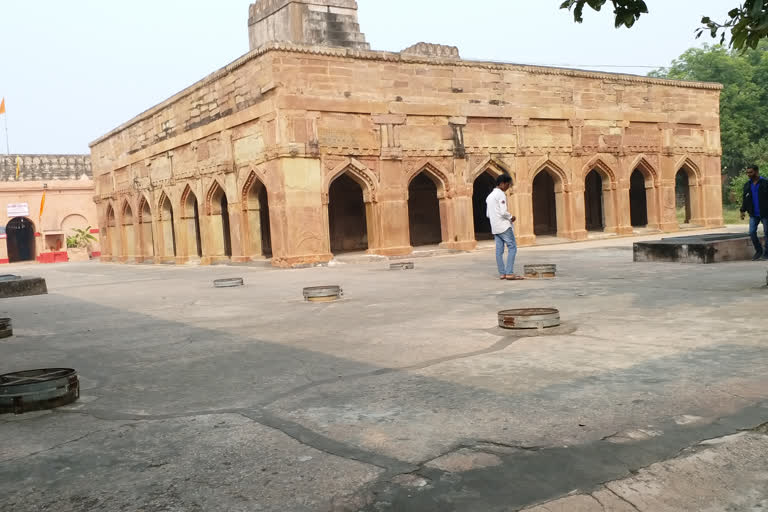Mirzapur (Uttar Pradesh): History neither be changed nor forgotten, this is the only thing which can signify it's presence through ancient sculptures.
Chunar Fort, towering 150 feet high over the holy river Ganga, 35 km south-west of Varanasi, plays a pivotal role in Indian history.
It is said that the author Devkinandan Khatri wrote famous great Hindi novel 'Chandrakanta' influenced by the fort of Chunar.
Hindi literature enthusiasts, know the Chunar Fort as the ‘Tilismi Qila’ or the ‘Magical Fort’, due to its appearance in Chandrakanta.
For centuries, Chunar Fort has been the preferred base in the region for militaries to occupy. Armed men are par for the course as part of the garrison here.
The fort gives a commanding view of the countryside around, and gun emplacements in its walls enabled the fort garrison to control riverine movement.
As per Cotton's list, the earliest record of a settlement at Chunar dates to 56 BC, to a ruler called Vikramaditya, who ruled the kingdom of Ujjain.
The tablet then takes a thousand-year leap to Prithviraj ‘Rai Pithora’, which is a reference to the last Chauhan ruler of Delhi, given the dates.
Muhammad Ghori comes next, but whether that invader ever made it this far into the Gangetic plain is doubtful. A clear record of the fort begins from the time of Babur, whose soldiers took the fort.
It later switched hands to Sher Shah Sur and eventually became part of Akbar’s realm. In fact, much of what is seen at Chunar Fort today was built under Akbar’s patronage.
Speaking to ETV Bharat, KM Singh, a Historian, said, "Chunargarh is the biggest Tilism Rehmatayi fort. The fort of Chunargarh is of stone equipped with ancient deep tunnels. Evidence of this is still present in many places. From time to time, there are signs that it has been closed due to security."
"Post the decline of the Mughals, the fort was juggled between the Nawab of Awadh and the East India Company, with the latter eventually emerging triumphant. Amongst various other uses, the British also used Chunar as a prison for state prisoners," Singh said.
"The place is quiet today and there can be few better ways of spending a winter morning here and explore at your own pace," he said.
A local priest, Abhimanyu Nath Goswami says that it is a very old fort, even today there are many tunnels which have been closed for security reasons.
ALSO READ: Pak to unveil Maharaja Ranjit Singh's statue in Lahore



